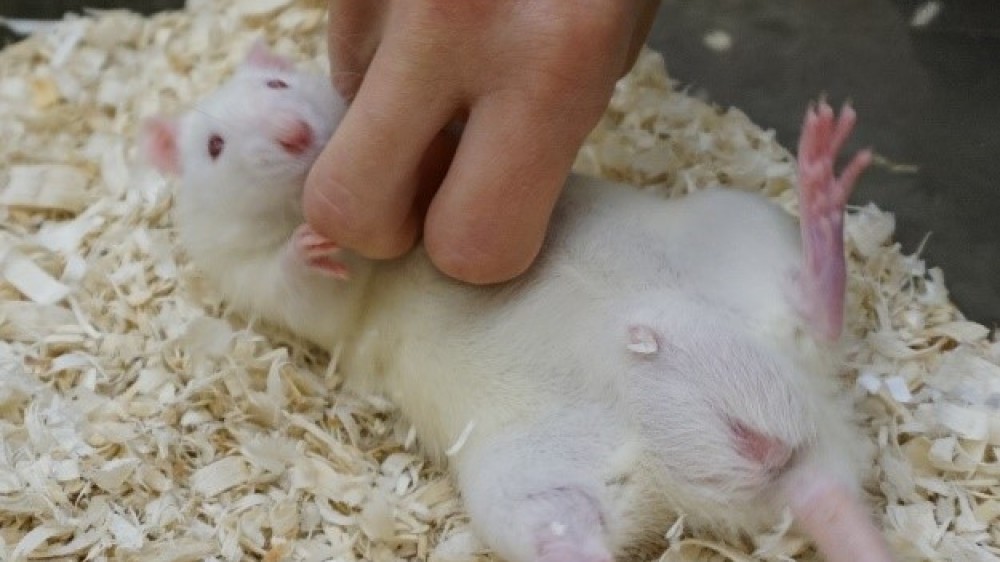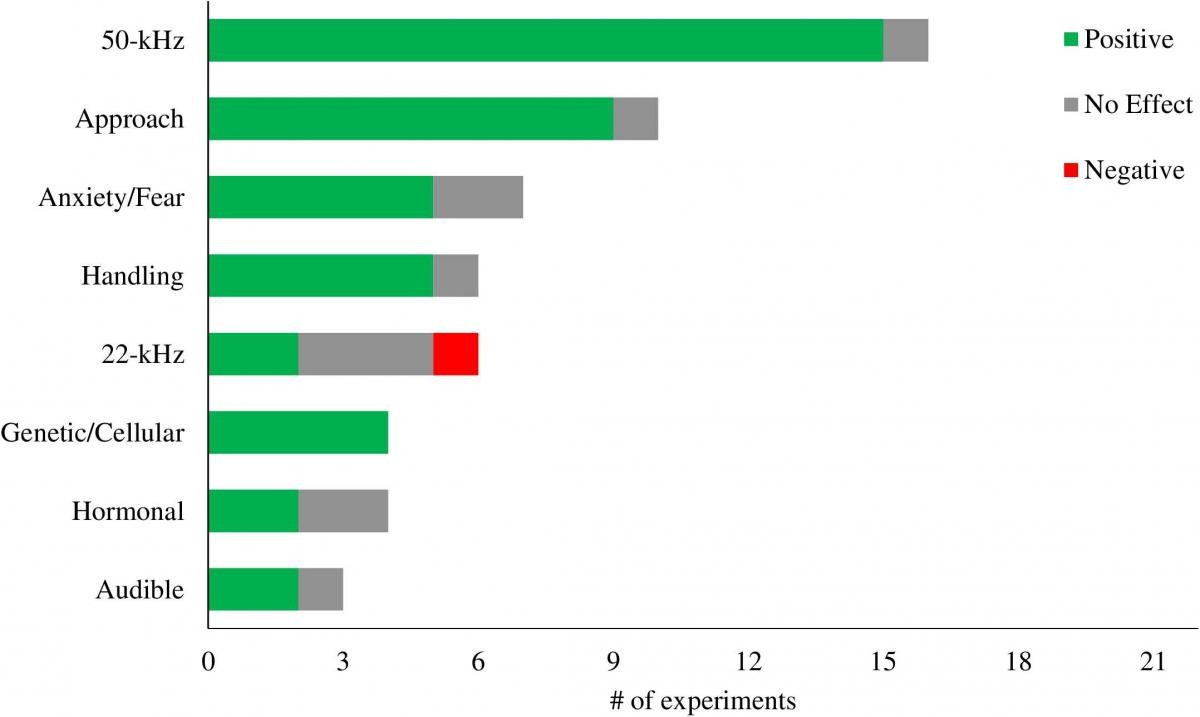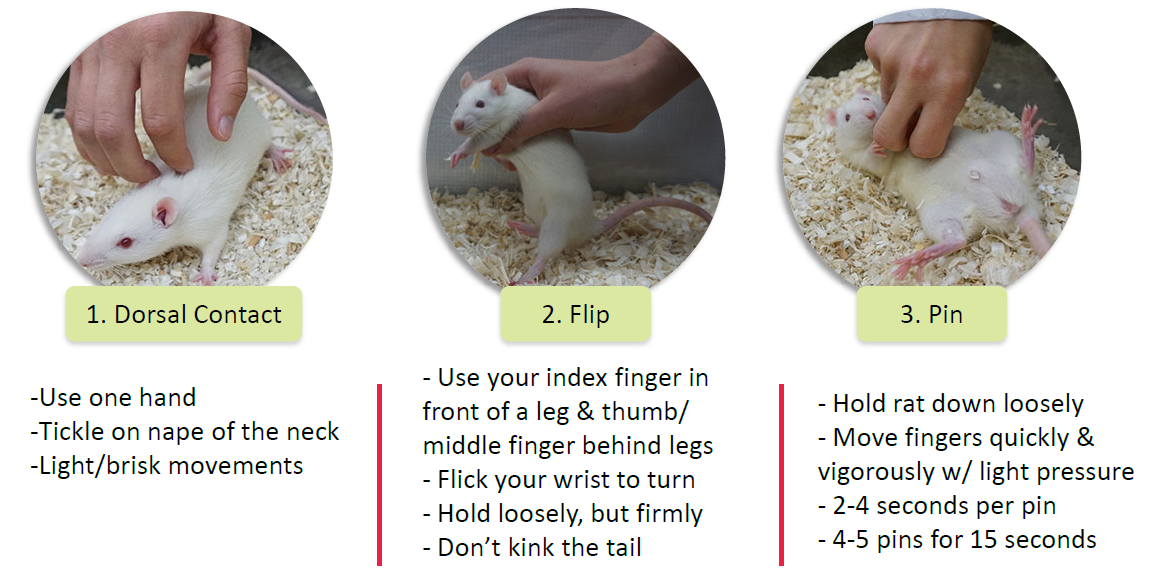Tickling rats: a social enrichment to improve rodent welfare

The importance of positive human-animal interactions is widely recognised for large laboratory animal species, but often ignored for the smaller rodents, despite growing evidence of benefits to their welfare. Here we highlight tickling as a social enrichment to improve rat welfare.
2017 saw Dr Jaak Panksepp, neuroscientist, pioneer of research into animal emotions and creator of the rat tickling technique, sadly pass away this spring. It’s been almost 20 years since he first developed the method, so taking a look at this habituation technique seems especially timely.
Designed to mimic the play activity of juvenile rats (see video below), tickling has been shown to be an effective means of generating a positive affect (a positive mental state) in these animals. Tickled rats produce vocalisations at 50 kHz, a range repeatedly shown to be associated with positive welfare1.
A systematic review, written by Megan LaFollette (PhD student, Purdue University), Dr Brianna Gaskill (Assistant Professor of Animal Science, Purdue University) and colleagues and published in PLOS One, examines the current evidence and evaluates the benefits, applications and challenges of the technique2.
The review notes that 22 separate experiments have evaluated the benefits of tickling and have reported tickling as an effective means of improving welfare and reducing anxiety in rats, both towards handlers and new environments (see figure below). Tickling rats before a stressful procedure, such as dosing or blood sampling has been found to reduce the impact of the procedure upon the animal3, making it both a refinement in the 3Rs sense and a potential means of limiting the experimental variability that such stress responses can cause.
While most of the data on tickling focuses on behavioural changes, some studies have also demonstrated biochemical alterations in rats caused by tickling, from increased circulating levels of the reward hormone dopamine4 to upregulation of several genes associated with feeding and metabolism. Corresponding effects have been seen in humans following laughter, leading the authors to speculate whether tickling could be used as a means of identifying biomarkers for positive affective states5.

Outcomes from tickling. The impact of tickling on various outcomes as assessed by experiments with a control specific to tickling (N = 22). Green = positive results from tickling. Grey = no difference from tickling. Red = negative result from tickling. (Source: LaFollette et al. 2017)
As with similar techniques of this type, the authors highlight that tickling currently needs the establishment of best practices and the best ways to employ this method across different rat strains, sexes and cage set ups. Currently a video journal article is in press at JOVE to demonstrate how to properly tickle rats. Additionally, they also begin to identify instances where this technique is most beneficial; for instance, the technique results in the most positive outcomes when performed on singly-housed rats compared to those which had been group-housed.
It also seems that tickling rats for the first time when they are adults may not be as rewarding as tickling rats as juveniles, indicating care must be taken when deciding when and where to implement this method.
For more information on rat tickling the Gaskill Lab has several dedicated pages on the technique and an excellent step-by-step guide on how to tickle a rat:

First conceived in 1997, tickling rats may be a novel technique for improving welfare but it certainly isn’t a new one. This raises the question of why the uptake of this refinement, most especially in the field of behavioural biology, hasn’t been higher? With the validation that Megan LaFollette and Dr Gaskill’s paper provides, perhaps 2018 will see a rise in the reporting of experiments utilising this method.
More rat tickling resources can be found on our website.
References
-
Burke CJ, Kisko TM, Swiftwolfe H, Pellis SM, Euston DR (2017). Specific 50-kHz vocalizations are tightly linked to particular types of behavior in juvenile rats anticipating play. PloS One, 2017; 12(5): e0175841.
-
LaFollette MR, O’Haire ME, Cloutier S, Blankenberger WB, & Gaskill BN (2017). Rat tickling: A systematic review of applications, outcomes, and moderators. PloS One, 12(4), e0175320. doi: 10.1371/journal.pone.0175320
-
Cloutier S, Wahl K, Baker C, & Newberry RC (2014). The social buffering effect of playful handling on responses to repeated intraperitoneal injections in laboratory rats. Journal of the American Association for Laboratory Animal Science, 53(2), 168-173.
-
Hori M, Shimoju R, Tokunaga R, Ohkubo M, Miyabe S, Ohnishi J, Murakami K and Kurosawa M, 2013. Tickling increases dopamine release in the nucleus accumbens and 50 kHz ultrasonic vocalizations in adolescent rats. Neuroreport, 24(5), 241-245.
-
Yamamuro T, Hori M, Nakagawa Y, Hayashi T, Sakamoto S, Ohnishi J, Takeuchi S, Mihara Y, Shiga T, Murakami K,Urayama O (2013). Tickling stimulation causes the up-regulation of the kallikrein family in the submandibular gland of the rat. Behavioural brain research, 236, 236-243.
